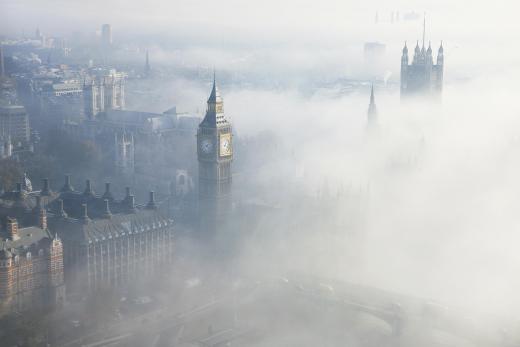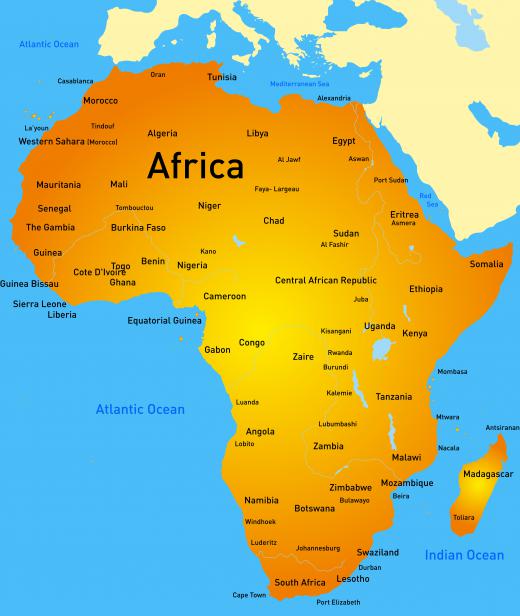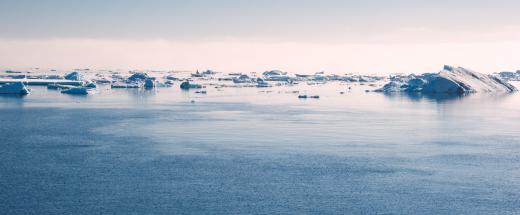What Is Advection Fog?
 Dee Saale
Dee Saale
Advection fog is the fog that is produced when damp air is moved across a surface that is cooler than the air. It is most commonly seen over seas or other bodies of water, but it is possible over snow-covered or frosty land masses, as well. When the temperature of the air is lowered to its dew point, changes start to happen. First, saturation occurs. Then, fog.
In areas where sea air is cooled by the water, advection fog is most common. Consequently, this fog is also called sea fog. This fog is usually seen during certain seasons, specifically spring and the first few months of summer. At that time, the surface temperature of the sea water is either at its lowest temperature or recovering from a winter season where it was already at its lowest.

There are plenty of examples of advection fog around the globe. Britain is surrounded by seas, and the sea air almost always approaches the country from the southwest. As a result, advection is quite common in that section of the country. Throughout Britain, there are regional names for the same occurrence. For example, the "fret" is common alongside the Northumbrian coast and the "haar" is seen in the southeaster portion of Scotland.

Some areas seem more of this fog than others. For example, in Newfoundland, it is typical four days out of every ten, particularly in the month of July. This is because there is a cool current called the Labrador Current in the sea that creates fog when warmer air hits it.
Other areas where advection fog is common include the Oya Shio and Kamchatka waters in the Pacific Ocean. In addition, there are areas of higher latitudes where it is found over pack ice and in the open ocean waters, even in the summer months. These areas include Antarctica, the Canadian archipelagos, and sections of the Arctic Ocean.

Costal advection fog is seen when extremely cold water moves parallel to subtropical continents. The Canaries Current near northwestern Africa, the Benguela Current near southwestern Africa, and the Humbolt Current near Chile are among the most well-known cool water currents that work to chill low-level air. Consequently, these areas often have advection fog.
If the wind in the above mentioned areas is less than 30 knots, the fog stays put. Alternatively, if the wind is stronger, the fog lifts. As a result, it forms stratiform clouds.
AS FEATURED ON:
AS FEATURED ON:














Discussion Comments
@seag47 - I am currently taking a meteorology class, and we are learning this stuff right now. I thought you might find it interesting to know that radiation fog you just learned about causes hoarfrost. Hoarfrost will form on any object that has been chilled by radiation cooling.
This type of frost occurs in the winter as a fuzzy layer of crystals of ice. It usually forms on things like grass blades and rooftops.
Hoarfrost is known by different names depending on its location. When it forms on power lines, it is called air hoar. If it forms inside of cars, caves, or buildings without heat, it is called crevasse hoar. When it forms on snow, it is called surface hoar.
I had no idea there were different types of fog. After reading this article, I noticed that my local TV station’s website has a section on different kinds of fog and how they form, and I noticed they mentioned both advection fog and radiation fog.
Radiation fog differs from advection fog in that it forms at night and is usually stationary. After sunset, the earth stops receiving radiation heat from the sun, but the earth’s surface radiates the heat it got during the day. As it does this, the ground cools, making it cooler than the air directly above it, and radiation fog forms.
I live near Mobile Bay, which is spanned by I-10. This interstate goes over nothing but water for miles. Fog is a common cause of wrecks and pile-ups here, and since there is nowhere to turn around, you just have to wait there for hours until the wreckage is cleared.
Fog warnings are often issued for boaters here, as well. Sometimes, the advection fog gets so bad that you can only see about the length of one boat in front of you.
If you get caught in a fog on a boat, the best thing you can do is slow down and find a safe spot to anchor. Use display lights and sound warning signals, and make sure you are wearing a lifejacket.
Post your comments